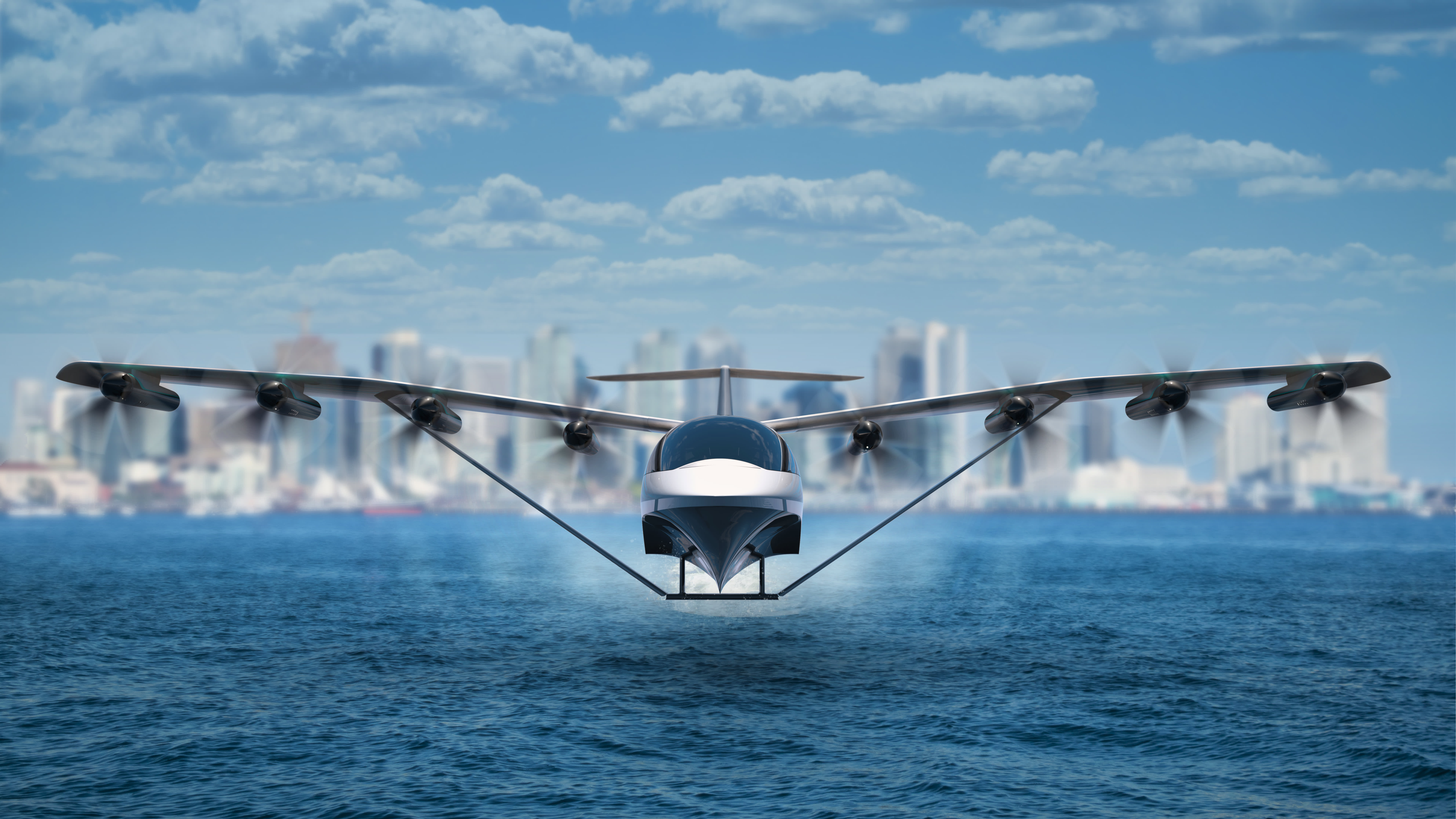Thiel Capital and regional aviation providers Mesa Air Group are investing in Regent, a start-up building electric seagliders that can fly low over the water at a top speed of 180 miles per hour.
Rather than taking off from a runway at an airport, Regent’s 12-passenger seagliders motor out of a harbor on a hydrofoil, and and can take off at a low speed due to their fixed-wing design. The company wants to make trips between coastal cities fast, safe, and affordable with the smallest possible environmental footprint, says CEO and co-founder Billy Thalheimer. (The startup’s name is an acronym for Regional Electric Ground Effect Naval Transport.)
Regent’s seagliders should also be able to fly to islands and coastal hubs where airports are inadequate, non-existent, or when infrastructure has taken a hit due to a natural disaster. Because they can fly low under a fog line, unlike helicopters, the company is developing prototypes with an interior fit for emergency medical transportation with capacity to hold equipment, and patients on stretchers, safely in place.
Mesa Air Group CEO Jonathan Ornstein told CNBC that in addition to investing a small amount in Regent’s $18 million venture funding round, co-led by Thiel Capital and JAM Fund, his company plans to purchase 200 of its fast-flying seagliders.
When it is able to put them into use, Mesa will supplement routes already served by its aircraft, and establish new city-to-city direct routes on the coasts, Ornstein said.
Because Regent’s electric seagliders are technically categorized as Wing in Ground Effect craft, or WIGs, they’re regulated by the U.S. Coast Guard rather than the Federal Aviation Administration. That may also help Mesa Airlines cope with a pilot shortage.
“There is a very significant pilot shortage today after government regulations put in place a few years back are coming home to roost. The 1,500-hour requirement has crippled the industry,” Ornstein notes. Laws in the U.S. require airline pilots to have 1,500 hours of flight time to work at a commercial airline, but there are exceptions for some students and military — and WIGs have a different set of requirements.
Thalheimer says the startup will be using its new capital infusion to build and test prototypes out on the water in Tampa, Florida, later this year. The company, which has about 20 full-time employees today and more on contract, will also use the funding for hiring.
